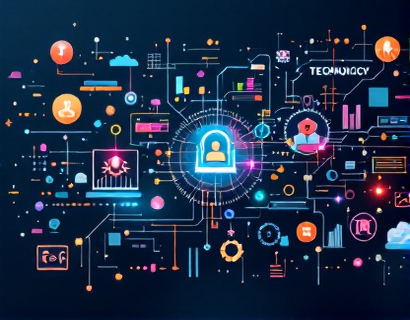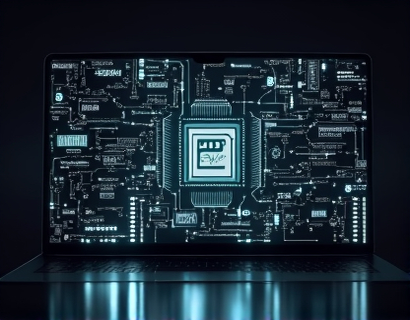Transforming Education with AI-Powered Chat Interfaces: Accessing Verified Tokenization Insights
In the rapidly evolving landscape of education, the integration of AI-powered chat interfaces represents a significant leap forward in providing accessible, reliable, and specialized knowledge to educators, students, and families. This article delves into how an AI-driven chat platform can revolutionize the way tokenization services and related industry insights are shared and understood, offering a tailored experience for diverse user groups.
Understanding Tokenization and Its Importance in Education
Tokenization, in the context of education and technology, refers to the process of converting sensitive data into unique identifiers, or tokens, which can be used in various applications without exposing the original data. This concept is crucial in ensuring data privacy and security, particularly in educational settings where student information and academic records are of paramount importance. By understanding tokenization, educators and administrators can better protect sensitive information and comply with regulations such as the Family Educational Rights and Privacy Act (FERPA).
AI-Powered Chat Interfaces: A New Paradigm for Knowledge Delivery
The introduction of AI-powered chat interfaces marks a transformative shift in how information is disseminated and consumed. These platforms leverage natural language processing and machine learning to provide users with accurate, context-aware responses to their queries. For educators, students, and families, an AI chat interface dedicated to tokenization offers a unique opportunity to gain specialized insights and industry knowledge in an interactive and engaging manner.
Specialized Insights for Educators
Educators play a pivotal role in integrating technology into the classroom, and understanding tokenization is essential for many of these applications. An AI chat interface can serve as a valuable resource, offering detailed explanations of tokenization processes, best practices for implementation, and case studies of successful integration. For instance, educators can ask about the benefits of using tokenization to secure student data, and the chat can provide a comprehensive overview, including technical details and practical tips.
Moreover, the chat can assist educators in staying updated with the latest trends and research in educational technology. By engaging in conversational queries, educators can receive real-time updates on new tools, methodologies, and regulatory changes that impact their work. This continuous learning loop ensures that educators are well-equipped to leverage technology effectively in their teaching practices.
Empowering Students with Interactive Learning
Students benefit greatly from interactive and engaging learning experiences. An AI chat interface designed for educational purposes can offer a child-friendly version that simplifies complex concepts like tokenization into understandable terms. This ensures that students of all ages can grasp the fundamentals of data security and privacy without feeling overwhelmed.
The chat can present information through a series of questions and answers, interactive scenarios, and even gamified elements to keep students engaged. For example, a student might ask, "What is tokenization?" and the chat could respond with a simplified explanation followed by a brief interactive quiz to reinforce the learning. This approach not only educates but also fosters a curiosity and interest in technology and data security.
Supporting Families in the Digital Age
Families are increasingly involved in their children's education, especially in the digital realm. An AI chat interface can serve as a bridge between schools and homes, providing parents and guardians with the knowledge they need to support their children's learning and ensure their online safety. By offering accessible and reliable information, the chat can help families understand the role of tokenization in educational technologies and how to advocate for secure practices.
For instance, a parent might inquire about how tokenization protects their child's personal information in an online learning platform. The chat can provide a clear and concise explanation, along with recommendations for discussing these topics with their children. This empowers families to make informed decisions and collaborate effectively with educators to create a safe and supportive learning environment.
Content Verification and Accuracy
One of the key advantages of an AI-powered chat interface is its ability to ensure content verification. In an era where misinformation can spread rapidly, having a reliable source of accurate information is invaluable. The chat platform can be designed to cross-reference data from trusted sources, ensuring that the information provided to users is not only up-to-date but also verified for accuracy. This is particularly important in the context of tokenization, where misunderstandings can lead to significant security risks.
To maintain the highest standards of accuracy, the chat can be integrated with a database of peer-reviewed articles, official guidelines, and expert opinions. Users can have confidence in the information they receive, knowing that it has been rigorously checked and validated. This level of trust is essential for building a credible and effective educational tool.
Child-Friendly Version for Safe Learning
Recognizing the need for a safe and engaging learning experience for children, the AI chat interface can offer a specialized child-friendly version. This version would use simpler language, visual aids, and interactive elements to make learning about tokenization and data security both fun and educational. The chat can be designed to adapt to the user's age and understanding level, ensuring that the content is always appropriate and accessible.
For example, a young student might ask, "Why do we need to protect our information online?" The child-friendly chat could respond with an analogy, such as comparing personal information to a treasure that needs to be kept in a safe place, and then provide a more detailed explanation tailored to the child's age group. This approach not only educates but also helps build a foundation of digital literacy from an early age.
Interactive and Engaging Learning Experiences
To keep users engaged and motivated, the AI chat interface can incorporate various interactive features. These might include quizzes, polls, and interactive simulations that allow users to apply what they've learned in a practical context. For educators, this could mean running a simulated tokenization exercise to demonstrate its benefits in a classroom setting. For students, it might involve a game where they must protect virtual data using tokenization techniques.
These interactive elements not only make the learning process more enjoyable but also help reinforce key concepts through hands-on experience. By actively participating in the learning process, users are more likely to retain information and develop a deeper understanding of the subject matter.
Future-Focused Information and Industry Trends
The field of tokenization and educational technology is constantly evolving, and staying informed about the latest developments is crucial for all stakeholders. An AI chat interface can serve as a hub for real-time information, providing users with updates on new research, emerging technologies, and industry trends. This ensures that educators, students, and families are always informed about the most current practices and innovations.
For instance, the chat can alert users to new studies on the effectiveness of tokenization in enhancing data security, or notify them of upcoming conferences and webinars where they can learn from industry experts. By staying ahead of the curve, users can make informed decisions and contribute to the ongoing advancement of educational technology.
Accessibility and Inclusivity
Inclusivity is a core principle in the design of the AI chat interface. The platform is built to be accessible to users with diverse needs, including those with disabilities. Features such as text-to-speech, adjustable font sizes, and high-contrast modes ensure that the chat is usable by everyone, regardless of their abilities. This commitment to accessibility aligns with the broader goal of creating an inclusive educational environment where all students and families can benefit from the resources available.
Moreover, the chat can be localized to support multiple languages, making it accessible to a global audience. This is particularly important in multicultural educational settings where users may have different linguistic backgrounds. By providing content in multiple languages, the chat helps break down barriers and ensures that everyone has equal access to valuable information.
Building a Community of Learners
An AI chat interface can also foster a sense of community among educators, students, and families. By enabling users to connect and share their experiences, the chat can create a supportive network where knowledge is exchanged and collaboration is encouraged. For example, educators can form groups to discuss best practices for integrating tokenization into their curricula, while students can join forums to collaborate on projects related to data security.
This community aspect not only enhances the learning experience but also builds a network of like-minded individuals who are passionate about advancing educational technology. The chat can facilitate these connections by suggesting relevant groups or initiatives based on users' interests and activities.
Conclusion
In conclusion, an AI-powered chat interface dedicated to tokenization insights offers a powerful tool for transforming education. By providing specialized, verified information in an interactive and engaging manner, this platform empowers educators, students, and families to navigate the complex world of data security with confidence. The child-friendly version ensures that even the youngest learners can benefit from these resources, fostering a culture of digital literacy and security from an early age. As the educational landscape continues to evolve, such innovative solutions will play a crucial role in shaping the future of learning.










































